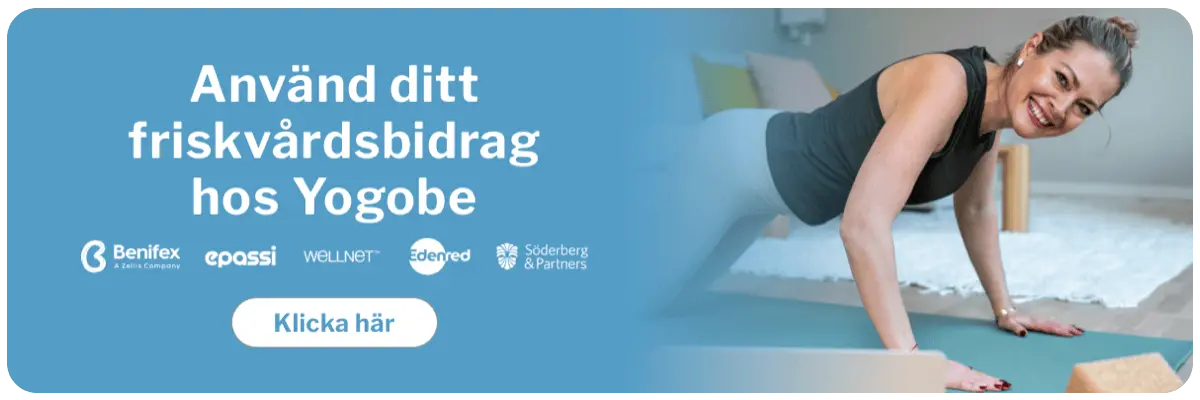
How to understand yoga through gravity
What is the relationship between yin, fascia and architecture? Yoga teacher Frida Starvid (former Boström) writes about yoga in relation to gravity. Learn more about why yin yoga can do wonders for your body and mind.
The architecture of the body
Before doing my own teacher training in yin yoga, I admit I was a non-flattering combination of ignorant and uninterested. I wouldn't say that I've completely switched personality since – my real forte is still more dynamic practices - but being a person who needs my experiences to take a detour through the intellect for ratification, acquiring a solid theoretical foundation proved essential for me to enjoy a Yin practice at all.
The coin dropped the moment I realized what kind of structure the human body is. There are reasons for why we consist of elements as different as small toenails and large intestines, and depending on what slice of the human experience you want to dissect, different body parts come into play. But for the sake of this particular analysis, let´s focus on what constitute the fundamental parts of our loadbearing structure; our muscles, bones and fascia.
So, the human body is a structure that firstly needs to be stable, and secondly needs to be able to move. Unless we had some rigidity in our bodies, we would be pulled down to earth by gravity and get dispersed into a jelly-like blob. And if we couldn't move, our particular genes would have been chewed up by a tiger a long time ago. What does the job of keeping us upright is our skeleton. We all know that if we manage to stack our bones on top of each other in a nicely aligned way, we need almost no muscular effort to stay in an upright posture. And to make this rigid bone structure move at will, we use our muscles. The muscles have the ability to contract, and when they do, they pull on the bones, initiating action.
However, the muscles have no shape-keeping property in themselves. What gives them shape is the fascia that surrounds the muscle and also surround each muscle fibre. A large part of the muscle mass is actually made up of fascia. If you're an architect like me (or just pretend you are for now) you can regard bones like columns (taking up compression forces) and fascia/muscles like cables (good for tension forces). As long as you stay upright and still, without defying gravity too much, you're ok. And as long as you're in constant movement, this column-and-cable structure will happily work along with you because that's what it is designed for.
Use yin yoga to unlock your muscles
But, if you hold your arm out still in front of you for a long time, if you repeat the same ball-throwing movement a million times, or if you sit slumped over your computer with your neck in a forward-tilted position for hours each day, the body parts that are located outside the loadbearing centre start to be pulled down by gravity. The fascia, which reads pressure changes in the body compared to the surroundings (this is scientifically proven) will then start to lay down its fibers around the muscle that need most structural support. With time and repetition, the area at work gets hard and tense. The fascia has thickened, “locking” the muscle into its current position. And if this goes on for long enough, a bad posture, tightness or an uneven muscular pattern is created.
Unlike muscle fibres, fascia can't be stretched. In order to release areas of fascial tension, we need an “unpinning” to happen. The fascial fibres that have laid down and hardened need to be broken away from the tissue they are attaching to. Yin yoga is practiced in a slow and controlled manner so that this unpinning can happen safely, without the risk of unintentional tearing. That's why we don't do physical adjustments in Yin. Also, some claim that Yin is best practiced with a cold body, which, as long as you take is slow, makes the unpinning more effective. So, this is what I ponder on during five minutes in a supported Paschimottanasana. Some people think about the heart chakra, others about the colour of autumn, others again about Chinese acupuncture points, but not me.
In the larger perspective, it's not too bad to think about yoga in relation to gravity. Especially if you, like me, are distinctly interested in arm balances and inversions. To some degree, those asanas are about muscular strength and flexibility. But the bulk of the technique behind a handstand or a one-legged crow lies in understanding how to position yourself so the force of gravity flows through your body parts in the most balanced way. A useful thought, in other words, also for the yang-loving yogi!
About Frida
Frida Starvid (former Boström) is a Vinyasa, Ashtanga, Rocket and Yin teacher (200+140 hr), educated in India, Sweden and Spain. She started off as an architect but after a burnout she decided to shift careers. Her first trip to an ashram in India in 2015 led to many more, and evoked her already existing curiosity about philosophy and meditation, as well as fun and physically challenging yoga. Frida gives regular classes and assists at yoga teacher educations in Sweden and abroad. Frida also runs the brand Furö with her husband. Read more about Frida at her website or follow her on Instagram.
Practice Yin Yoga on Yogobe
video id: bu75
video id: fw68
video id: 5f3c
video id: fp68
To be able to see the full video you need to be logged in as a paying member. New to Yogobe? Register to start your 14 days free trial here!

Yogobe
